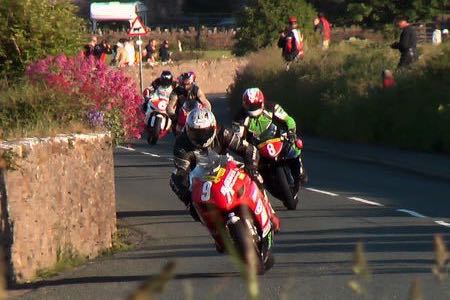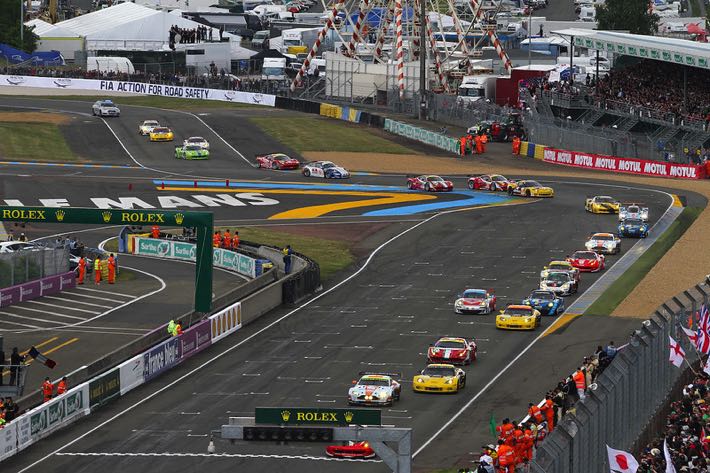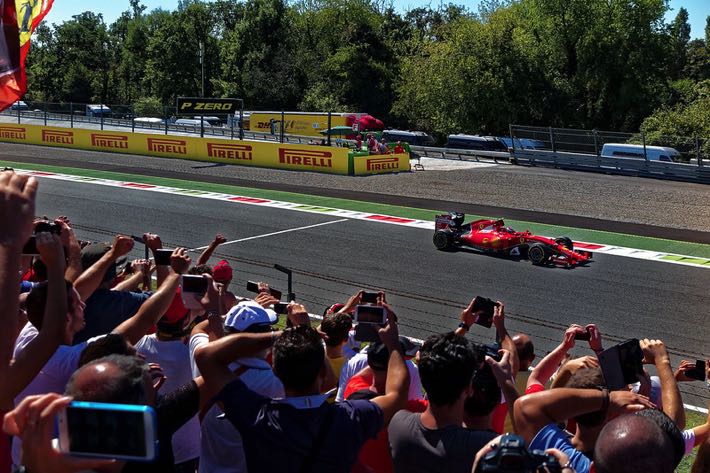
The very nature of motorsports is such that they are dangerous events to be involved in. Regardless of whether you’re taking part in a Grand Prix or a different form of racing, you are driving vehicles at extremely high speeds, around tracks that have been intentionally set up to be tight and tough to take on. Most drivers know that the moment that they get into a vehicle, they’re taking their lives into their own hands and putting themselves it risk of injury or even death. It is a risk that they’re willing to take, but are some races riskier than others?
The statistics certainly seem to suggest as much. Of all of the races that people can enter, few offer as much danger as the Isle of Man TT. In 2022 alone, five people died during the competition, with two more in a serious condition after they suffered accidents. For some, the risk that comes with taking part in the event is what makes them so keen to do it, feeling alive because of the proximity of death. For spectators, the idea that people are risking so much gives the event an extra frisson that can’t be escaped. Is it motorsport’s most dangerous race?
What Is the Isle of Man TT?
 The TT in the title of the Isle of Man TT stands for ‘Tourist Trophy’. The race has been taking place annually on the island since its inauguration in 1907, promising a week of practice sessions before a week of races. The event takes place on the public roads of the Isle of Man, which are closed to the public during the event thanks to an Act of Tynwald. When it was first held, it was known as the International Auto-Cycle Tourist Trophy, which offers some indication about what to expect from the competitors, riding on motorbikes.
The TT in the title of the Isle of Man TT stands for ‘Tourist Trophy’. The race has been taking place annually on the island since its inauguration in 1907, promising a week of practice sessions before a week of races. The event takes place on the public roads of the Isle of Man, which are closed to the public during the event thanks to an Act of Tynwald. When it was first held, it was known as the International Auto-Cycle Tourist Trophy, which offers some indication about what to expect from the competitors, riding on motorbikes.
The event is run as a time trial and the following classifications are in place:
- Senior TT
- Lightweight TT
- Junior TT
- Superbike TT
- Superstock TT
- Sidecar TT
Obviously each classification has its own requirements, with the fastest within the category being crowned the champion for it. The race mainly takes place on the Isle of Man TT Snaefell Mountain Course, which was first used in 1911. One of the traditions that has been in place since the 1920s involves spectators touring the Snaefell Mountain Course on motorbikes during ‘Mad Sunday’, an unofficial event that takes place between the end of Practice Week and the start of Race Week.
‘Sport’s Most Dangerous Event’

The nature of the Isle of Man TT is such that it is considered by many to be the most dangerous event in sport. Such is the extent to which people feel that it is an event that takes lives, the island is often referred to as the ‘Isle of Manslaughter’ for the duration of the racing. Given that the lap record belongs to Peter Hickman thanks to his 16 minute, 42.778 second time driving at and average speed of 135.452 miles per hour, it isn’t hard to see exactly what is so dangerous about it and why it is that so many crashes occur.
Every May and June, the world’s best motorcycle racers gather to take on the 37.73 mile circuit. There are around 400 curves and turns, each asking a different question of the drivers. Whether they need to lap the course three, four or six times depends on what category they enter, but the lumps and bumps of the circuit are there regardless. As 1984 vintage bike winner Dave Roper put it, “There’s a lot of stuff to hit on the course and a lot of it is immovable.”
To give you a sense of just how deadly the race is, here is a list of fatalities on the Mountain Course by year, ranging from 1911 to 2022:
| Year | Number of Deaths |
|---|---|
| 1911 | 1 |
| 1913 | 1 |
| 1914 | 1 |
| 1923 | 1 |
| 1927 | 2 |
| 1929 | 2 |
| 1931 | 1 |
| 1933 | 1 |
| 1934 | 1 |
| 1935 | 2 |
| 1938 | 1 |
| 1939 | 1 |
| 1948 | 3 |
| 1949 | 1 |
| 1950 | 2 |
| 1951 | 5 |
| 1952 | 1 |
| 1953 | 4 |
| 1954 | 2 |
| 1956 | 2 |
| 1957 | 1 |
| 1958 | 2 |
| 1961 | 3 |
| 1962 | 2 |
| 1964 | 2 |
| 1966 | 2 |
| 1967 | 1 |
| 1968 | 1 |
| 1969 | 1 |
| 1970 | 6 |
| 1971 | 2 |
| 1972 | 1 |
| 1973 | 1 |
| 1974 | 2 |
| 1975 | 2 |
| 1976 | 2 |
| 1978 | 5 |
| 1979 | 2 |
| 1980 | 3 |
| 1981 | 1 |
| 1984 | 1 |
| 1985 | 3 |
| 1986 | 4 |
| 1988 | 3 |
| 1989 | 4 |
| 1991 | 4 |
| 1992 | 1 |
| 1993 | 1 |
| 1994 | 2 |
| 1995 | 1 |
| 1996 | 4 |
| 1997 | 2 |
| 1998 | 3 |
| 1999 | 4 |
| 2000 | 4 |
| 2002 | 1 |
| 2003 | 1 |
| 2004 | 3 |
| 2005 | 3 |
| 2006 | 1 |
| 2007 | 1 |
| 2009 | 1 |
| 2010 | 2 |
| 2011 | 3 |
| 2013 | 1 |
| 2014 | 2 |
| 2015 | 1 |
| 2016 | 4 |
| 2017 | 3 |
| 2018 | 2 |
| 2019 | 1 |
| 2022 | 5 |
The fact that it is easier to count the years in which there wasn’t a death than when there was tells the Isle of Man TT’s own tragic story. If you add in the deaths in the Manx Grand Prix, the number goes up even higher. The deaths have involved different motorbikes, different nationalities and have occurred in both the practice week and the race week. The only thing that they have in common is that they occurred on the Mountain Course during the Isle of Man TT, which is why the race is considered to be so dangerous.
Are There Any Other Races That Come Close?
Given the premise of the piece is to ask whether the Isle of Man TT is the most dangerous race in motorsport, is only fair to ask if any other events come close in terms of risk to life. Sometimes races are considered to be dangerous because of one-off incidents, other times it is a culmination of things that lead to the title being bestowed upon a race or a course. In many cases, the tracks where danger was experienced are no longer in operation, which perhaps tells you something about the Isle of Man TT.
Circuit des 24 Heures du Mans

It is unlikely that there is a link between the word ‘Man’ appearing in a race’s title and the danger that goes along with it, but we shouldn’t rule it out. The Circuit des 24 Heures du Mans, also called the Circuit de la Sarthe, is a motorsport race course that is semi-permanent and is main used for the 24-hour Le Mans race. With as much as 85% of the lap time spent on full throttle and drivers reaching speeds of more than 200 miles per hour, it perhaps isn’t all that surprising that it has endured its share of incidents over the years.
The circuit’s shape has been altered a number of times over the years, not least after a crash in 1955 that would be considered the worst accident in motor racing. There was a sense of rivalry between the British Jaguar and the German Mercedes-Benz, with the Second World War still fresh in the memories of many. Two hours into the race, the Jaguar overtook an Austin Healey but slammed the breaks on for no reason, causing the Healey to break too, resulting in a Mercedes crashing into the back of it, going airborne and smashing into the grandstand.
More than 80 people died as a result of the crash, as well as the driver. Despite holding first and second position, Mercedes pitted all of their cars and asked Jaguar to step out of the race. Hawthorn declined, continuing driving in the wake of causing the sport’s most deadly accident.
Monza

For fans of Formula One, the name of Monza will elicit a sense of excitement. That is likely because most people don’t know of the track’s history, which took the lives of many drivers and even some spectators over the years. In 1955, for example, the two-time World Champion Alberto Ascari died in a crash there. Six years later and Wolfgang von Trips as well, as 14 fans died after an accident. Ronnie Peterson died in hospital not long after a crash at Monza. At the time of writing, 52 drivers and 35 spectators have died at the track.
A Look at the Courses
We could tell you about each course in detail, but too many of them have seen people lose their lives over the years. To give you a sense of just how dangerous the Isle of Man TT is, here is a look at the total number of lives lost at a selection of other racecourses at the time of writing:
| Track / Event | Deaths |
|---|---|
| Isle of Man TT (1911-2022) | 161 |
| Circuit de la Sarthe | 104 |
| Monza | 87 |
| Nürburgring | 78 |
| Indianapolis | 73 |
| Mille Miglia | 56 |
| Circuit de Spa-Francorchamps | 54 |
| Daytona | 40 |
| Carrera Panamericana | 27 |
| Targa Florio | 9 |
The list includes both drivers and spectators in most cases, though not all. Though ‘only’ 27 people died at the Carrera Panamericana, the endurance race only took place five times between 1950 and 1954, meaning that it boasts one of the biggest mortality races of any even in the table.